Here at Suttons, we’re lucky to own an archive of historical horticultural texts which provides fascinating insights into the history of many of our modern fruits and vegetables. One of our favourite books is the 1831 edition of The Companion For The Vegetable Garden, by Henry Phillips. Full of interesting info on what the folk of yesteryear thought about their food crops, we thought we’d dig into the past to bring you a selection of some of the best veggie facts from bygone times.
Browse our full range of vegetable seeds for your favourite heritage varieties and exciting new cultivars.
Know your historical onions
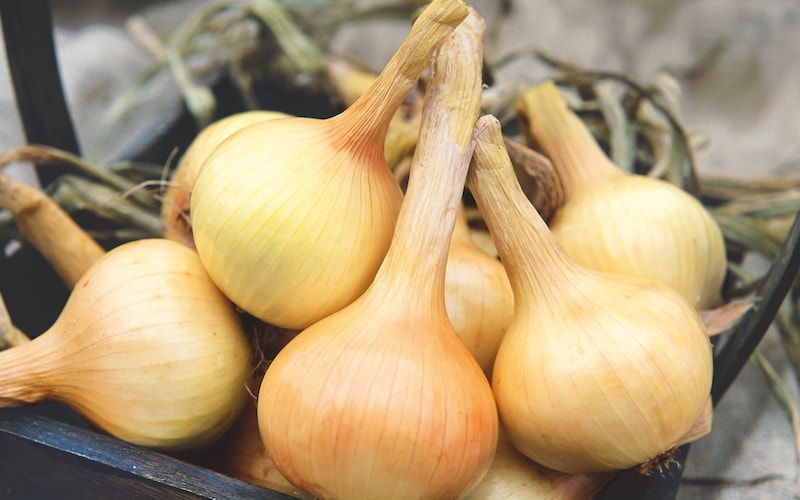
Image: Onion Seeds – Walla Walla from Suttons
According to Henry Phillips, the ancient Greeks knew the benefits of companion planting, believing onions “prosper better when savory is sown with them.” They were right – summer savory is well-known to help protect onions from pests and is reputed to make the harvest taste sweeter. Moving forward in time, Lord Bacon also knew the benefit of companion planting, writing that, “the rose will be the sweeter if planted in a bed of onions.”
As well as a food crop, Greek physicians believed in the healing powers of alliums for the eyes, and made poultices of onions believing that they cleared the sight by means of the tears they drew. William Shakespeare also valued onions for their tear-jerking properties, writing:
“If the boy have not a woman’s gift
To rain a shower of commanded tears,
An onion will do well.”
As for the dreaded ‘onion breath’, Philips writes that consuming a few parsley leaves after munching on onions will “effectually overcome the scent and cause the onions to sit more easy on the stomach.”
Garlic – a strength boosting bulb
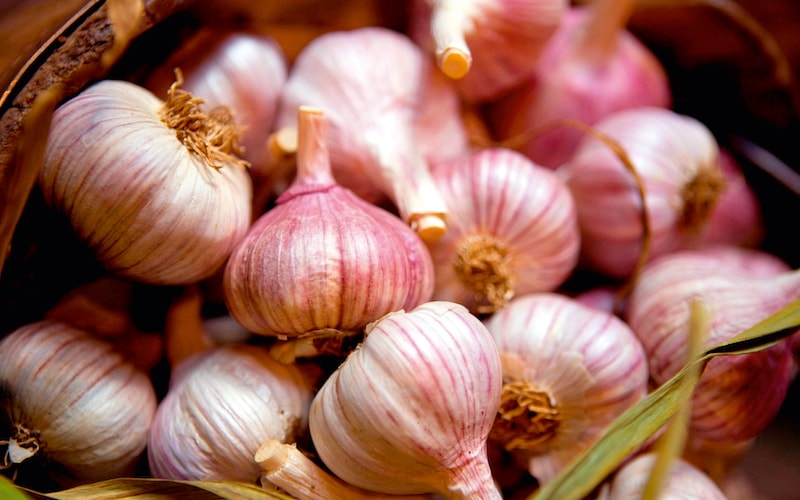
©Branded Garden Products
The Romans fed garlic to their slaves to strengthen them, and administered it to soldiers believing it would give them courage. Along similar lines they fed garlic to cockfighting birds before matches to make them fight more bravely. Also originating in Roman times is the practice of feeding boiled garlic to chickens as a natural wormer. Boiled garlic is still used as a poultry parasite cleanser today.
In medicine, garlic was used as both an expectorant and a diuretic and was given to those suffering from exposure as a way of warming them. In terms of sweetening the breath after eating garlic, eating baked beetroot was considered the best breath freshener.
Parsley – a herb for settling the stomach
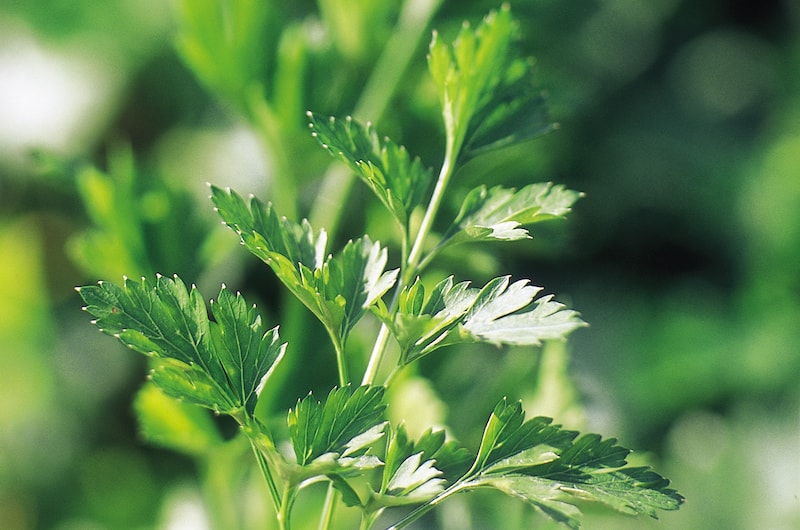
Image: Parsley Seeds – Plain Leaved 2 from Suttons
Garden parsley as we know it today was first cultivated in England in the reign of the child king, Edward VI, who reigned from 1547 until his death at the age of 15 in 1553. The Tudors considered this herb to be “delightful to the taste and agreeable to the stomacke.” According to Henry Phillips, when sown, parsley seed “never appears in less than forty days, nor does it often exceed fifty.”
In the past, sheep used to be fed huge amounts of parsley as a prevention against foot rot, and throwing parsley into ponds was believed to cure sickly fish.
Parsnips – rooted in the past
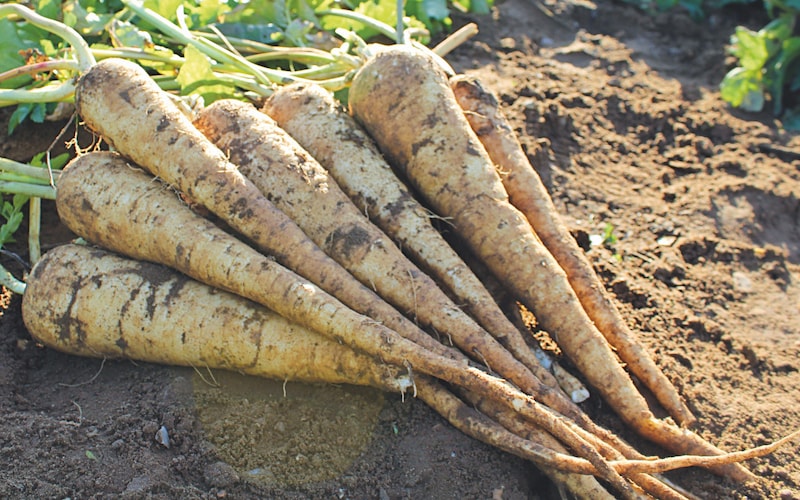
Image: Parsnip Seeds – F1 Panorama from Suttons
For the ancient Greeks, parsnips worked as both aphrodisiac and toothache remedy – a bout of toothache certainly does spoil the mood. As a sweet vegetable it was also often used as a sugar substitute with evaporated parsnip juice sometimes spread on bread in place of honey.
The ancients also believed in the healing power of parsnips and fed parsnip marmalade to convalescents to help rebuild their strength. The benefits of this widely appreciated root vegetable also extended to cows and sheep which were fed parsnips to encourage milk production.
Cucumbers – the food of an emperor
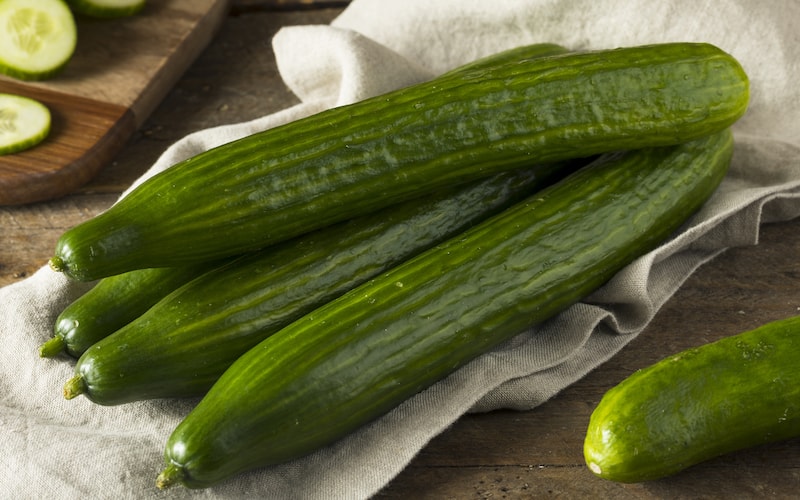
Image: Cucumber Seeds – Telegraph Improved from Suttons
Cucumbers arrived in England with the Romans and thankfully never left. Emperor Tiberius rated them so highly that he ate them daily and, to meet demand, his gardeners created mobile vegetable beds and chased the sun with their precious cargo.
But fashions changed and cucumbers eventually fell out of favour to the extent that by the 1600s they were considered only fit for feeding to livestock. This earned them the new name of ‘cowcumbers’. In fact, some human deaths were attributed to cowcumbers. This has never been proved but could perhaps have been due to early varieties containing very high levels of the bitter flavoured chemical cucurbitacin which can be fatal if consumed in large quantities.
Thankfully, with selective breeding, cucumbers developed and gardeners found ways of reducing the bitter flavour. See our article on How to Avoid Bitter Cucumbers for modern day tips.
In 1911 Suttons introduced Cucumber ‘King George V’, and in 1926, HRH King George V did in fact visit the Suttons’ Reading site to say ‘thank you’ for the part we played in feeding the nation during WW1. Cucumber ‘King George’ is no longer available but it was bred from ‘Telegraph’, an improved version of which remains in our range today.
It’s reassuring to know that many of our top modern veggies werealso highly rated in past times. So whether you have sickly fish, onion breath, or want a sweet treat to spead on your toast, now is the time to get growing! Find expert advice in our vegetable Growing Guides section to get you off to a strong start.
Lead image: AnonymousUnknown author, Public domain, via Wikimedia Commons
Last Updated on February 10, 2025 by Suttons Horticultural Team




